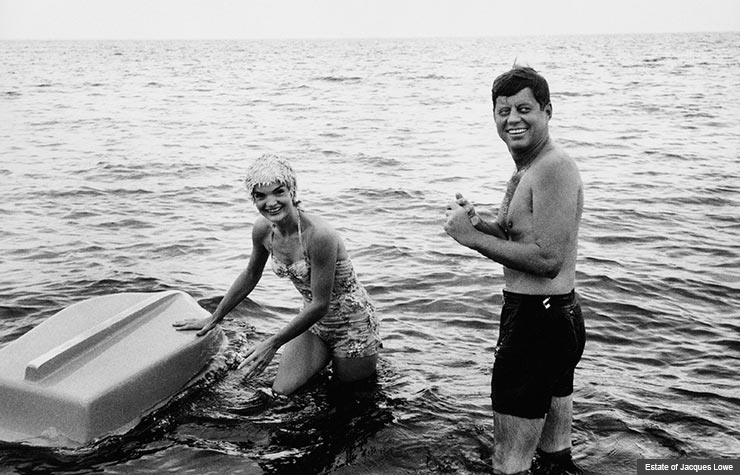
I recall a summer when I was a young man sitting on the front steps of one of the homes at the “Kennedy Compound” in Hyannis. The house was in need of paint. Cats roamed the porch which smelled on cat piss, and a beloved Kennedy lay on the porch swing, drunk at two in the afternoon.
Having grown up with the sad event of the assassination with the most famous Kennedy in that compound, John Fitzgerald Kennedy, I felt I had arrived that summer at the wasteland-end of illusion.
But we are born of something extraordinary and also of something deadly. We sense the vibrations behind the veil of the myth of Kennedy’s Camelot as sure as Dorothy was attune to the sound behind of the curtain of the little Wizard’s make-shift machine.
Joe Kennedy, that ruthless lawbreaking infidel, who lived in the house of pride that stirs all mythology, stopped at nothing to get his way. The patriarch lobotomized his oldest child and closeted her away in earthly oblivion. He cheated openly on his long-suffering socially conscious wife with Hollywood star-girls. He bribed and manipulated the system to get his son elected president.
But his son and his son’s brother, Robert, were not built of the same cloth as their terrible father. In a turn that not even Joseph Campbell, William Shakespeare, or Carl Jung could have dreamed, the sons shut the door the best they could on their father’s mythic treachery in support of equality of people over prideful, self-interest.
Jackie Kennedy was a willing accomplice to the hopeful illusion that the terrible patriarch perpetuated. She was a lover of the arts and a believer in stories, and after her own storied widow-dom, she became a top editor in the great tower of stories, Doubleday. But Queen Jackie’s heart and ears were empathetic to the nature of fiction: “Fiction is the great lie that exposes the greater truth.”
“Hello, this is Joe Kennedy,” said the gravely voice on the phone.
“You are kidding me,” said Jacques Lowe.
“No, I am looking at these wonderful pictures that you have taken for LIFE magazine. I want to hire you to take pictures of my son, Jack.” said the patriarch.
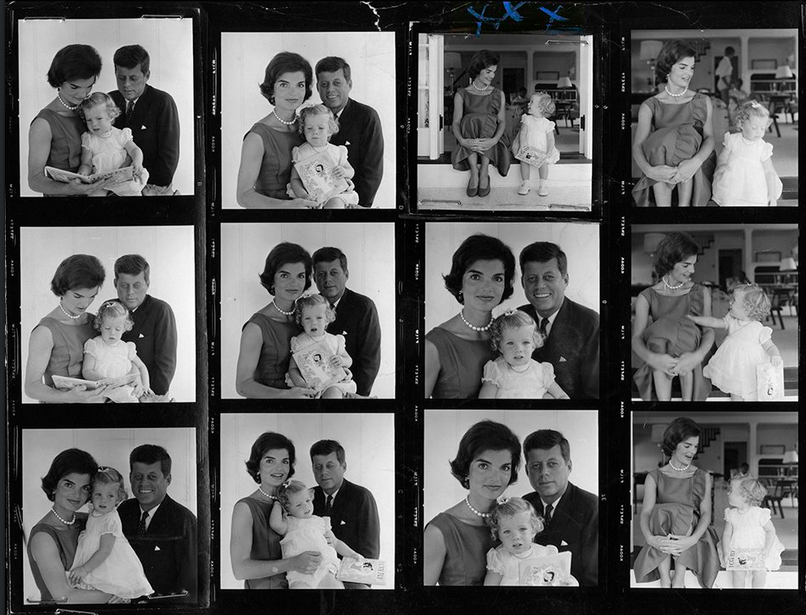
First contact sheet from a Jacques Lowe photo session
So began a long-term relationship with the Jack Kennedy family. Jacques Lowe‘s perfect eye created a cultivated world of casual and youthful elegance from volleyball games and sailing in Hyannis to parenting of toddlers in the oval office . All posed under the incredible eye of Jacques Lowe – the world of rolled up khakis on the beach, and tossed abundant hair, and family and brotherhood shined.
Jacques Lowe was never paid by the White House . He was on the dole of Joe Kennedy for all those Presidential years. By all accounts, not even Jack Kennedy realized how much his ethos and his family image was still being manipulated by the shadowed patriarch. 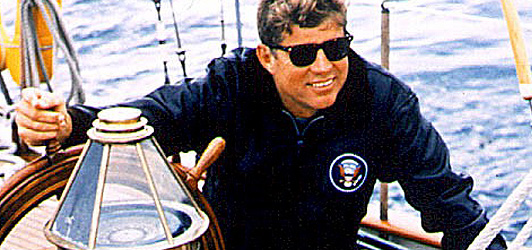 As children of new media, we gloried in the pictures of such a place as “Camelot”. . This was a land about to explode with pigs in a bay, but a presidential dad still found time to delight in his child dancing in his office.
As children of new media, we gloried in the pictures of such a place as “Camelot”. . This was a land about to explode with pigs in a bay, but a presidential dad still found time to delight in his child dancing in his office.
Meanwhile in another part of the world, a short young boy, Ralphie Lifschitz , panted for that reality of casual elegance. In the sad death of JFK, this short boy built an empire on the dream of such a casual land. In his own obsession, he stamped his made-up name upon the world: Ralph Lauren.
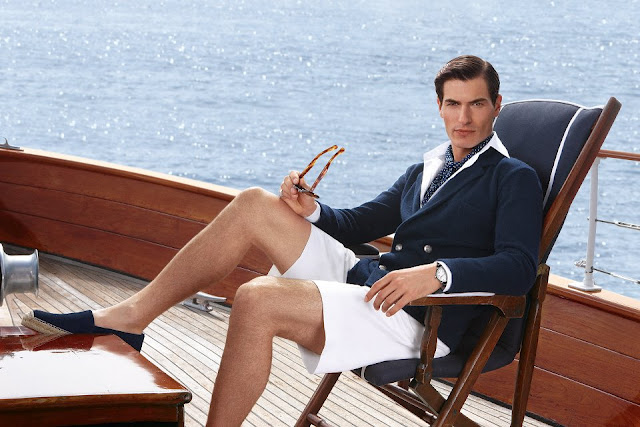
A Ralph Lauren Clothing Ad
“What the hell is Ralph doing?”Marla Maples, the actress and former wife of nutso Donald Trump, asked me. We were looking at a mountain top In Telluride. At the precise time the setting sun hit the mountain peak, Ralph Lauren galloped down the mountain in silhouette in his long slicker and cowboy hat.
“He’s reliving Camelot,” I said.
“Oh, yes, I see.” Marla, an actress, replied.
Once he reached the BBQ which he was hosting, Ralph Lauren got off his horse and sauntered over to us. The fashion scion looked ridiculous. I wanted to laugh at the 5 ‘2″ billionaire in the cowboy hat and slicker, until he took of his hat and showed me the enormous stitches on his head.”I have just had brain surgery so I am feeling insecure. That’s why I am wearing the hat ,” Ralph said.
His head wound was the result of a different kind of explosion than John Fitzgerald Kennedy suffered. My hardened heart broke for his vulnerability and candor.
By far the most potent element of the Kennedy legacy was the one that associated JFK with the legend of King Arthur and his famous Kingdom. As with many of the myths and legends surrounding President Kennedy , this one was the creative contribution of Jackie Kennedy who imagined and artfully circulated it in those grief-filled days following her husband’s death.
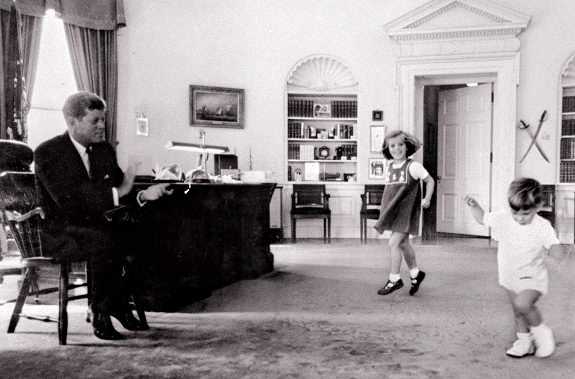
Dancing in the Oval Office of Camelot
On the weekend following the state funeral, Jackie invited the journalist Theodore White to the Hyannis. She was providing an exclusive interview to serve as the basis for an essay in a forthcoming issue of Life magazine dedicated to the fallen King of vigor.
White was a respected journalist and the author of the best-selling chronicle of the 1960 campaign, The Making of the President, 1960, that portrayed candidate Kennedy in an especially favorable light and his sweating opponent Richard Nixon in the shadows.
Jackie Kennedy pressed upon White the Camelot image that would prove so influential in shaping the public memory of JFK and his administration.
President Kennedy, she told the journalist, was especially fond of the music from the popular Broadway musical, Camelot, the lyrics of which were the work of Alan Jay Lerner, JFK’s classmate at Harvard. The musical, which featured Richard Burton as Arthur(singing song at the end of this scroll) , Julie Andrews as Guinevere, and Robert Goulet as Lancelot, had a successful run on Broadway from 1960 to 1963. According to Jackie Kennedy, the couple enjoyed listening to a recording of the title song before going to bed at night. JFK was especially fond of the concluding couplet: “Don’t ever let it be forgot, that once there was a spot, for one brief shining moment that was Camelot.”
President Kennedy, she said, was strongly attracted to the Camelot legend because he was an idealist who saw history as something made by heroes like King Arthur . This was a claim White knew to be untrue based on his close relationship with Jack.
“There will be great presidents again,” she told White, “but there will never be another Camelot.” In this way, and to her credit, Jackie Kennedy sought to attach a morally uplifting message to one of the more ugly and tragic events in American history.
Following the interview, White retreated to a guest room in Hyannis to review his notes and compose a draft of the essay. His Life Magazine editors were at this hour (late on a Saturday evening) holding the presses open at great expense while waiting to receive his copy over the telephone. When White later phoned his editors to dictate his text (with Jackie Kennedy standing nearby), he was surprised by their reaction for they initially rejected the Camelot references as sentimental and inappropriate to the occasion.
Jackie, interpreting the gist of the exchange, signaled to White that Camelot must be kept in the text. The editors quickly relented. White later wrote that he regretted the role he played in transmitting the Camelot myth to the public.
These word paintings were contained in White’s essay in the special issue of Life that hit the newsstands on December 3, 1963. Life at that time had a weekly readership of more than 30 million. The extensive distribution of the issue guaranteed that the essay would receive the widest possible circulation here and abroad. Though the Arthurian motif has been ridiculed over the years as a distortion of the actual record, it has nevertheless etched the Kennedy years in the public memory as a magical era that will never be repeated.
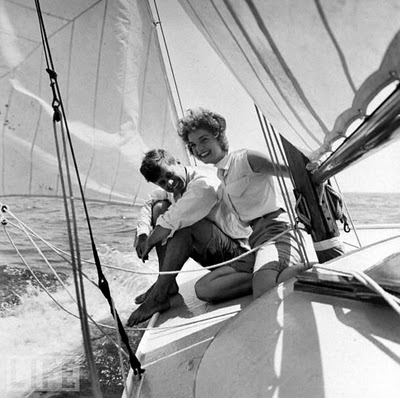
Camelot, the Broadway musical (later a Hollywood movie), was adapted from T. H. White’s (no relation to the journalist) Arthurian novel, The Once and Future King, published in 1958 but made up of four parts that the author wrote separately beginning in 1938. White’s novel has proved to be one of the most popular and widely read books of our time. Reviewers called it “a literary miracle” and “a queer kind of masterpiece.”
There were biting ironies in Jackie’s attraction to a legendary kingship that unravels due to the consequences of betrayal and infidelity and to her association of the central myth of English nationality with the United States’ first Irish president.
Just as Joe Kennedy raped the world to make his son a president, so the wizard Merlin, King Arthur’s chief mentor, had King Pendragon deceive Igraine to bear a royal child named Arthur who would become the greatest King of Briton. Nevertheless, Jackie looked past these parallels to focus on the central message of White’s novel that portrayed war as pointless and absurd. President Kennedy, as his widow wanted him to be remembered, was like King Arthur—a peacemaker who died in a campaign to pacify the warring factions of mankind.
One must admire Jackie for the skill with which she deployed these images in the difficult aftermath of her husband’s death. Our retrospective view of President Kennedy is now filtered through the legends and symbols she put forward in her prescient pushing of White.
Culture is ambiguous because man is conflicted, We swing between charity for the greater good and our own driven desires. The story of Camelot is the story of the struggle of all men and women. The terrible fathers who chose lobotomy over mercy for their children wrestle with the greater good of our soulscapes every single hour of every single day.
Some call the imprint on all of us “conscience”, others might say “general revelation” or our internal divinity, atheists or secular humanists may call it the gift of “free choice”.
Socrates said man can not become civilized until he gets control of his daemon, the passion of life that can bring about inspiring art as well as personal debauchery. The Buddha was never free until he wrestled Mara, a demon, from his consciousness. A Christian is never able to find peace until he kicks man out of his personal Eden.
While King Arthur probably never existed, nor was there ever a Camelot we, nevertheless build the illusion again and again.
Camelot never really happened. But it’s still true.
This blog was written on the 50th anniversary of John Fitzgerald Kennedy’s assassination. David Paul Kirkpatrick is the author of the upcoming series, The Barefoot Stories, a restoration of the Merlin mythology based on the 13th century poems of Robert de Boron.







